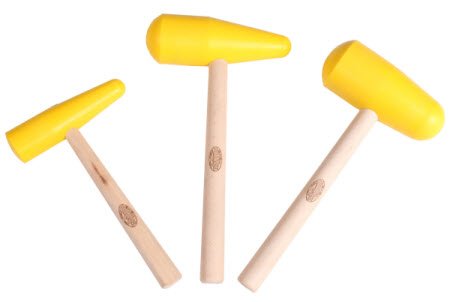Hammer is perhaps the most imperative hand tool used from fitting parts, forging metal, breaking apart objects to riveting and chipping metal. The tool, which is designed to deliver a sudden impact to an object, is available in varying shapes, sizes and weights. Hence, there are multitude of hammers available that help metal workers in a myriad of ways. Choosing the best hammer is critical to make the job easier and avoid possible damage to the workpiece. To avoid confusion and to make the selection process simple, the post provides a few popular types of hammers which are in widely use today! The post also discusses the varied uses of hammer in metal work.

Which are the Top Seven Types of Hammers?
The uses of hammer in metal work cannot be ignored. As mentioned earlier, hammers can help you accomplish several tasks in the metal working industry. Each hammer is designed for specific purpose, hence choosing the right one holds great significance. Let’s see a few amongst the popular types of hammers that find immense applications in varied sectors of metalworking
- Claw Hammers: Widely known as the most popular hammer for general work, claw hammers are used for pounding another surface or extracting nails from the work piece. The hammers, which weigh anywhere from 7 to 32 oz., provide unsurpassed balance and temper while blowing.
- Ball -Peen Hammers: With a domed face on one side and a cylindrical face on the other, ball peen hammers are specifically suitable for forging, bending, forming and peining. Commonly referred to as a machinist’s hammer, they are designed to reduce vibrations due to heavy impact.
- Cross and Straight Peen Hammers: These general purpose carpenters’ hammers feature straighter or crossed peens instead of a ball, as in the case of ball peen hammer. Cross and straight peen hammers are mainly sourced for metal shaping applications.
- Planishing Hammers: Designed to form mild sheet metal up to 16 gauge or aluminum up to 1/8” thick, these hammers are widely chosen for fine shaping and smoothening a surface. Featuring polished like a mirror finish face, they also contribute to removing the hammer marks made during raising or forming.
- Embossing Hammers: These type of hammers are majorly used to create elevated areas on work pieces. They help form a dimpled texture on flat and slightly domed metal by hammering from the inside. Made with hardness and endurance, they are an ideal tool for precise metalwork and silversmithing.
- Riveting Hammers: As a general purpose hammer, riveting hammer is ideally used for rivet busting and rivet-removal in the steel-construction. Lightweight and versatile, riveting hammers are designed in such a way with one end flat for general hammering tasks and the other chisel-shaped end, especially for riveting.
- Chasing Hammers: Featuring a rounded end, and a slightly convex shaped head, these hammers can be used to form metal into complex relief designs. With a large, slightly rounded striking area, chasing hammers are used to forge a metal or to refine them into a proper shape.
The types of hammers are not limited to the ones afforested. There are several models of hammers available that differ with respect to other in shape, weight, application, and material of construction, specifications among others. The other popular types of hammers that can efficaciously contribute to your metal working include:
- Hatchet Hammers
- Sledge Hammers
- Scaling Hammers
- Raising Hammers
- Forming Hammers
- Framing Hammers
Never blow your work piece using a wrong hammer. Making the right section helps getting the metal forming job done accurately and as expected. Leading manufacturer and suppliers of sheet metal forming tools like Woodward Fab helps you in the selection process and assist you procuring the right hammer that suits your application!
Related Post:
-
Sheet Metal Stamping Presses: Precision in Manufacturing
-
How to Use Hammers and Dollies to Repair Vehicle Dents Effectively?
-
What do you Know About Bossing Mallets?